Nikon Nikkor Z 50 mm f/1.4
5. Chromatic and spherical aberration
Chromatic aberration
The optical construction of the Nikkor Z 50 mm f/1.4 doesn't feature any low dispersion glass element. That's why we were very curious how this lens would deal with chromatic aberration correction.When it comes to the longitudinal variant it is not especially bothersome. By f/1.4 and f/2.0 you can notice slight colouring of out-of-focus images. It disappears only by f/2.8 and, fortunately, this effect is not especially pronounced.
 |
Now let's check the correction of lateral chromatic aberration – an appropriate graph can be found below.
Please Support UsIf you enjoy our reviews and articles, and you want us to continue our work please, support our website by donating through PayPal. The funds are going to be used for paying our editorial team, renting servers, and equipping our testing studio; only that way we will be able to continue providing you interesting content for free. |
- - - - - - - - - - - - - - - - - - - - - - - - - - - - - - - - - - - - - - - - - - - - - - - -
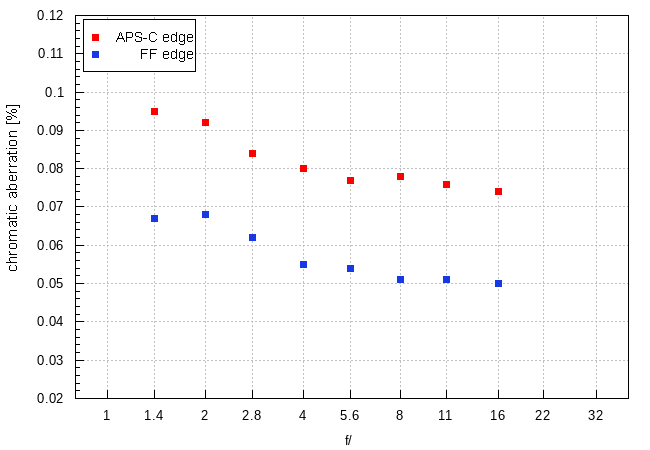
What's interesting, the results observed on the edge of the APS-C/DX sensor are higher than on the edge of full frame. It can partially explain why up to f/2.8 aperture included, the resolution on edges of both detectors are so similar. Fortunately on the edge of full frame the said aberration doesn't go higher than low and on the edge of the APS-C/DX it doesn't exceed medium values. As you see you almost don't have any reasons to complain.
| Nikon Z7, 50 mm, RAW, f/1.4 | Nikon Z7, 50 mm, RAW, f/16.0 |
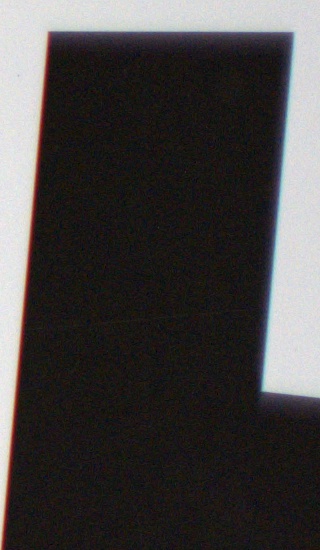
|
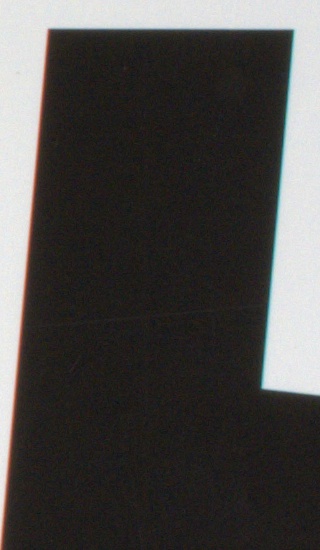
|
Spherical aberration
When it comes to spherical aberration correction you can find a lot of reasons to complain. First photos from this chapter show slight focus shift. You can notice that, with stopping down the aperture, the depth of field moves toward shorter distances.Also out-of-focus circles of light we created before and behind the focal point feature some traces of not perfectly corrected spherical aberration. In the first case you get soft edges, in the second case – a very distinct, bright rim. It is a classic symptom of the presence of spherical aberration.
| Nikon Z7, 50 mm, f/1.4, before | Nikon Z7, 50 mm, f/1.4, after |
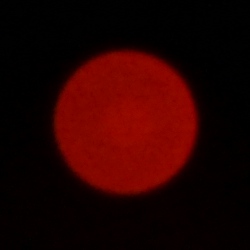
|

|
In order to find out how strong that effect is we decided to perform a more thorough test. First we found the best focus possible by f/1.4 and then we measured sharpness levels at higher aperture values without changing the focal point. Then we repeated that process but that time we looked for the best focus possible by f/5.6. A graph, shown below, presents our results.
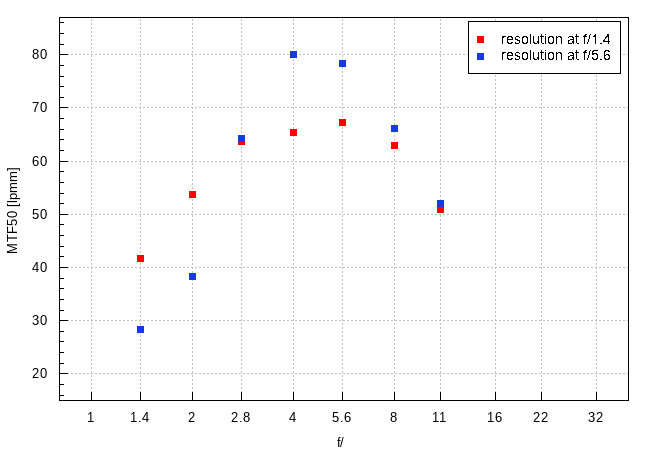
If the lens was devoid of any traces of spherical aberration both edges would be very similar, of course within the margin of error. The situation is different, though, and it is the final proof that the Nikkor Z 50 mm f/1.4 doesn't correct spherical aberration in a good way.






